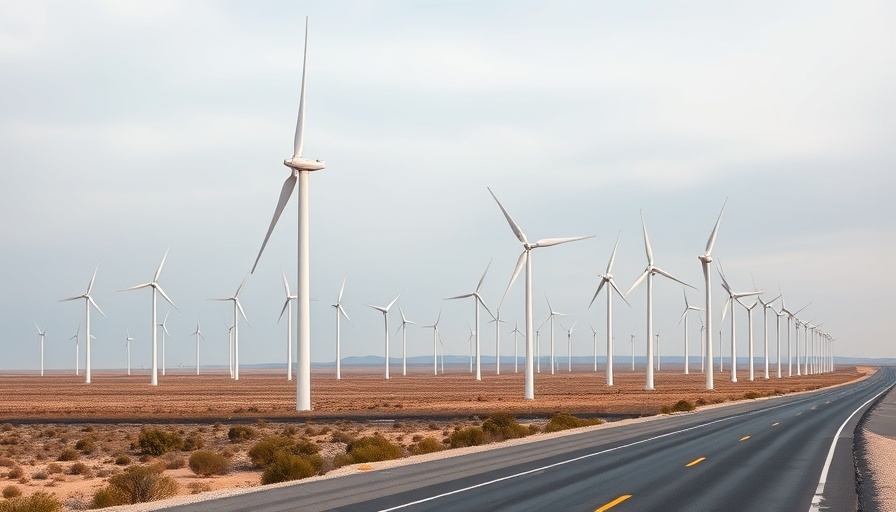
The Shift in China’s Energy Dynamics
For the first time, China’s transition to clean energy sources has led to a reduction in carbon dioxide (CO2) emissions, a significant milestone considering the rapid growth in power demand. A recent analysis from Carbon Brief indicated that during the first quarter of 2025, China experienced a decline in CO2 emissions by 1.6% year-on-year. This marks a notable shift in the trajectory of emissions in one of the world’s largest polluters.
Renewable Energy's Growing Influence
The unexpected drop in emissions is attributed to an increased electricity supply from renewable sources such as wind, solar, and nuclear power, which has effectively reduced the reliance on coal despite soaring energy demands. For contrast, previous reductions in emissions were typically linked to periods of economic downturn inside China. The current clean power generation outpaces both current and long-term average electricity demand growth, an encouraging sign for sustainable development.
Long-Term Emissions Outlook
While China’s CO2 emissions currently sit only 1% below their recent peak, concerns linger about the potential for a rebound as economic activity ramps back up. Key sectors of the economy, together with trade policies from the United States, will play a crucial role in determining whether this downward trend in emissions holds steady. The U.S.-China trade tensions have propelled China to focus more on boosting domestic consumption, a strategic pivot that may aid in sustaining lower emissions levels.
Pathway to Meeting Emissions Targets
China has set ambitious goals to cut down emissions in alignment with its commitment to the Paris Agreement. A recent tariff on renewables has triggered a surge in installation efforts as infrastructure adapts to new pricing policies. The commitment to sustainability within China's next five-year plan will be a pivotal factor in meeting its emissions targets and possibly heralding a structural decline in emissions as previously projected.
Potential Impacts on Global Climate Goals
If these trends continue, we could soon witness a peak and sustained decline in China’s power sector emissions, a hopeful prospect for global climate initiatives. While the reduced power sector emissions indicate progress, experts stress the urgent need for China to bridge the gap to meet its 2030 emissions targets to maintain its leadership in global climate action.
Engagement in Sustainable Practices
The relevance of these developments extends beyond national borders. For eco-friendly readers and advocates of sustainability, understanding China's trajectory in renewable energy is crucial for aligning personal and organizational practices with broader climate action. Employing renewable energy sources, advocating for policies promoting clean energy, and supporting initiatives that advance sustainable living will play vital roles in global conservation efforts.
A Call to Action for Green Living
Each of us holds a responsibility to contribute to the climate fight. Whether it's reducing our carbon footprint through responsible consumption, advocating for environmental policies, or investing in sustainable technologies, our actions collectively shape the future. Embracing a cleaner, greener lifestyle not only contributes to a healthier planet but also sets a precedence for generations to come.
Join the movement towards a more sustainable future and explore ways you can contribute to reducing waste and promoting clean energy in your community. By taking simple steps such as supporting eco-friendly products and practices, we not only foster environmental conservation but also ensure the vitality of our planet.
 Add Row
Add Row  Add
Add 



Write A Comment